Best Practices for Chatbot Automation Services

Chatbot automation services have revolutionized how businesses interact with customers. These services streamline communication, offering instant responses and 24/7 availability. The chatbot industry is expected to grow to $1.25 billion by 2025, reflecting its increasing importance. Studies show that 62% of consumers prefer chatbots over waiting for human agents, and 87.2% rate their interactions as neutral or positive. Optimizing these tools enhances customer experience and operational efficiency. For instance, automating routine inquiries can save costs by up to 100 times compared to live support. Companies like Sobot leverage advanced AI to deliver seamless, efficient solutions that meet modern customer expectations.
Understanding Chatbot Automation Services
What Are Chatbot Automation Services?
Definition and key features of chatbot automation
Chatbot automation services refer to AI-powered tools designed to streamline customer interactions by automating routine tasks. These chatbots operate across multiple channels, offering instant responses and 24/7 availability. Key features include multilingual support, integration with self-service tools, and the ability to handle repetitive queries efficiently. By leveraging advanced technologies like machine learning, chatbots adapt to customer needs, ensuring personalized and accurate responses.
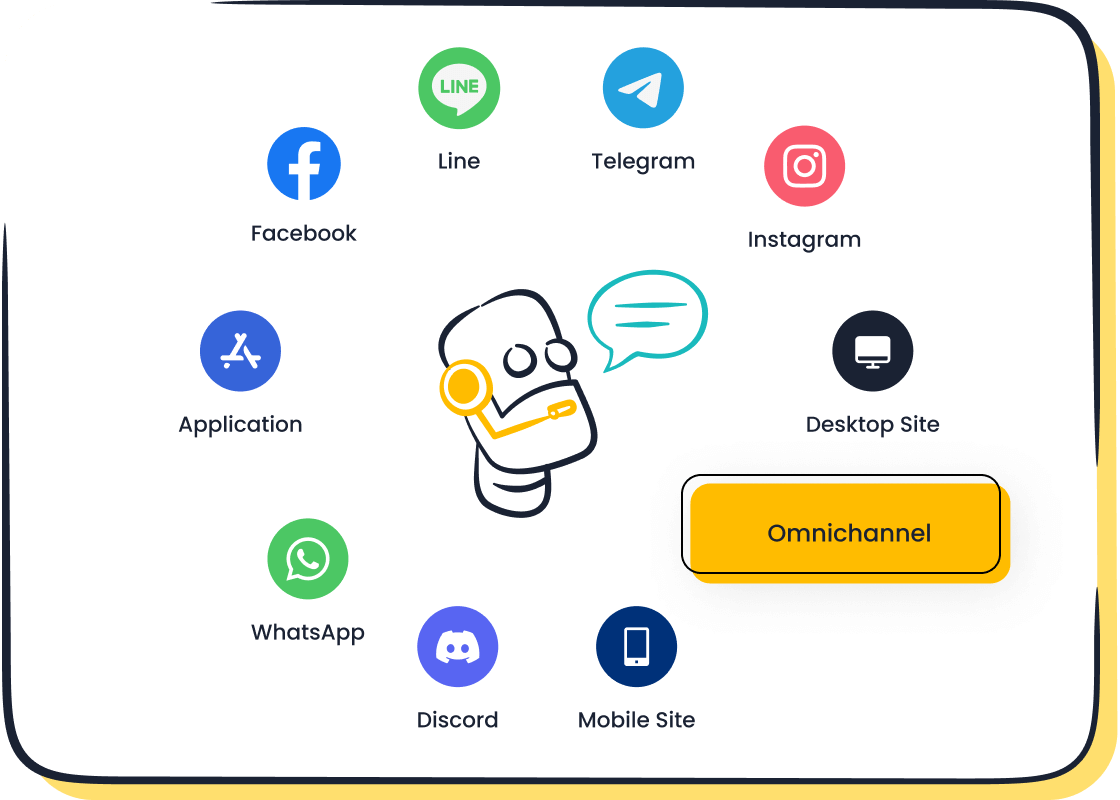
How Sobot's Chatbot enhances customer experience automation
Sobot's AI Chatbot takes customer experience automation to the next level. It autonomously resolves common queries, improving productivity by 70%. Its multilingual capabilities ensure seamless communication with diverse customers, while its no-coding-required setup simplifies deployment. Businesses use Sobot's chatbot to provide instant support, reduce service costs, and boost conversions by 20%. With omnichannel support, it integrates with platforms like WhatsApp and SMS, ensuring customers receive consistent service wherever they are.
Importance of Chatbot Automation in Customer Experience
Benefits of automation in streamlining customer interactions
Chatbot automation services transform how you interact with customers. They reduce wait times, improve response accuracy, and handle up to 80% of routine tasks. This efficiency not only enhances customer satisfaction but also reduces operational costs. For example, chatbots can manage 30% of live chat communications, freeing human agents to focus on complex issues. Businesses using chatbots report a 67% increase in sales and a 66% satisfaction rate with bot implementations.
Real-world applications in industries like retail and financial services
Industries like retail and financial services rely heavily on chatbots to meet customer needs. In retail, chatbots assist with abandoned cart recovery, product recommendations, and 24/7 support. Financial services use chatbots for policy suggestions, insurance advice, and form automation. These applications demonstrate how chatbots streamline operations while enhancing customer experience automation.

Common Use Cases of Chatbot Automation
Handling FAQs and repetitive queries
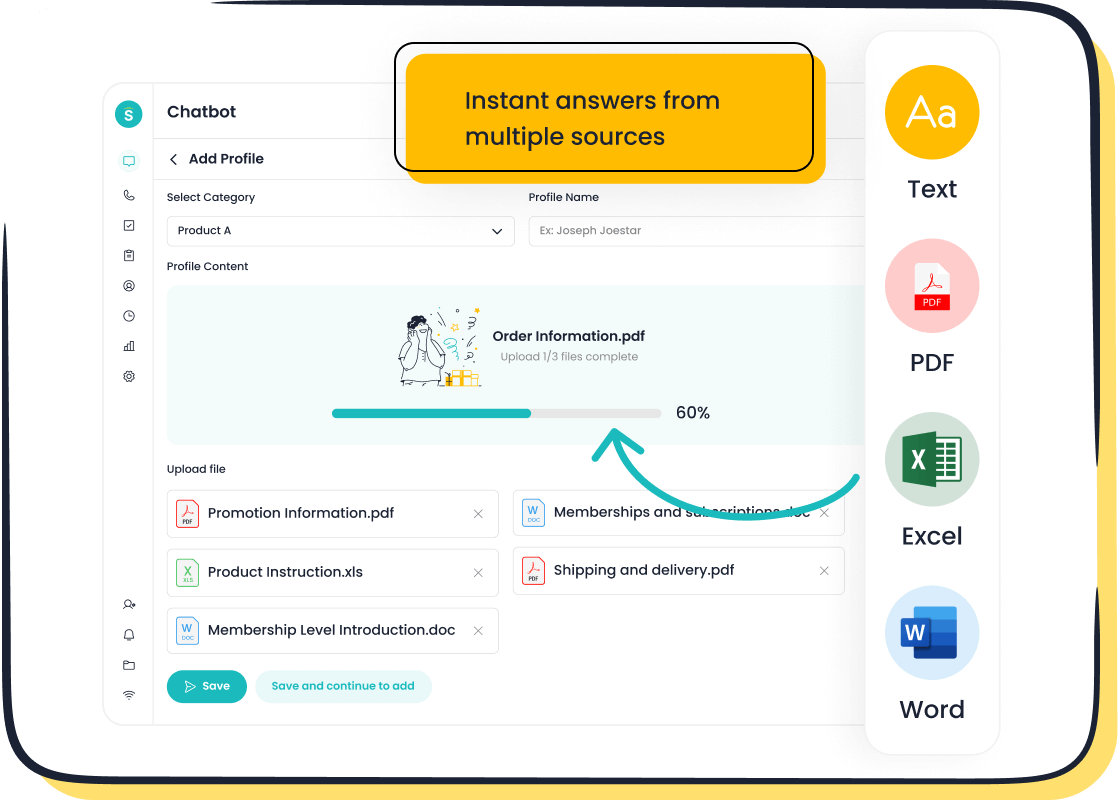
Chatbots excel at addressing frequently asked questions and repetitive queries. They provide instant answers, reducing customer wait times and improving satisfaction. For instance, Sobot's chatbot achieves an 83% resolution rate, as seen in OPPO's case study. By automating these tasks, businesses save time and resources while ensuring customers receive accurate information.
Supporting sales, marketing, and customer support
Chatbots play a vital role in sales, marketing, and support. They facilitate lead generation, send personalized offers, and assist with order tracking. In customer support, chatbots handle inquiries, direct customers to the right resources, and escalate complex issues to human agents. Sobot's chatbot boosts conversions by 20% through proactive messaging and real-time assistance, making it an indispensable tool for modern businesses.
Best Practices for Chatbot Optimization
Personalizing Customer Interactions
Leveraging customer data for tailored responses
Personalization is key to creating meaningful interactions with your customers. By analyzing customer data, you can tailor chatbot responses to meet specific customer needs. For example, greeting customers by name or referencing their past purchases enhances the experience. AI chatbots equipped with advanced learning capabilities can adapt to customer preferences, ensuring responses feel natural and relevant. Studies show that 64% of consumers appreciate chatbots for their availability and personalized touch. To personalize the chatbot experience, ensure it understands customer queries effectively and uses clear, conversational language.
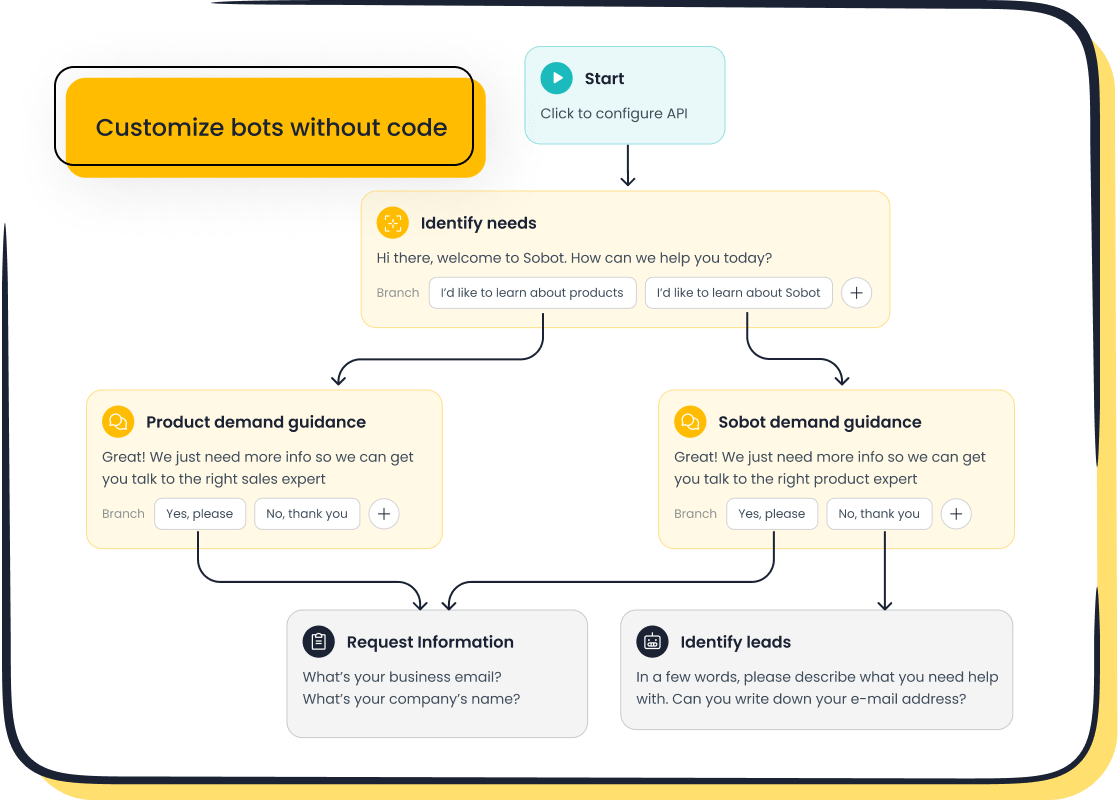
Aligning chatbot personality with brand identity
Your chatbot should reflect your brand's voice and values. Whether your brand is formal or playful, aligning the chatbot's tone with your identity builds trust and consistency. For instance, a luxury brand might use a professional tone, while a gaming company could adopt a casual and fun approach. Sobot's chatbot offers customization options, allowing businesses to create a chatbot personality that resonates with their audience. This alignment not only personalizes customer interactions but also offers consistent customer experience across all touchpoints.
Regular Updates and Training
Keeping the chatbot's knowledge base current
A chatbot's effectiveness depends on its ability to provide accurate and up-to-date information. Regularly updating its knowledge base ensures it stays relevant to customer needs. Incorporate recent customer interactions and FAQs into the training data to improve response accuracy. For example, Sobot's chatbot uses a knowledge base built from articles, PDFs, and other sources, ensuring it remains a reliable tool for customer service chatbots. This practice helps improve customer experiences by addressing queries with precision.
Using feedback loops for continuous improvement
Feedback is essential for chatbot optimization. Analyze user feedback to identify areas for improvement and refine conversation paths. Regular monitoring of metrics like query resolution rates and customer satisfaction scores ensures the chatbot adapts to changing expectations. Implementing feedback mechanisms allows you to gather insights directly from customers, enhancing the chatbot's ability to meet their needs. This iterative process keeps the chatbot aligned with best practices and ensures it continues to improve customer experience automation.
Integrating Chatbots with Self-Service Tools
Linking chatbots to FAQs, knowledge bases, and help centers
Integrating chatbots with self-service tools like FAQs and knowledge bases enhances their functionality. Customers can quickly find answers to common questions without needing human assistance. For example, Sobot's chatbot links seamlessly to help centers, providing instant support and reducing operational costs. High self-service usage rates highlight the importance of this integration in improving customer satisfaction. Businesses that use chatbots to provide instant support see significant improvements in efficiency and customer experience.
Ensuring seamless transitions between chatbot and other tools
A smooth transition between chatbots and other tools, such as live agents, ensures a positive customer journey. When a chatbot cannot resolve an issue, it should escalate the query to a human agent without losing context. Sobot's chatbot excels in this area by integrating with omnichannel platforms, ensuring customers receive consistent service. This approach not only improves satisfaction but also enhances operational efficiency by streamlining workflows.
Leveraging Data and Analytics for Enhanced Customer Experience

Tracking Key Metrics for Chatbot Optimization
Metrics like response time, resolution rate, and customer satisfaction
Tracking performance metrics is essential for chatbot optimization. Metrics such as response time, resolution rate, and customer satisfaction provide insights into how well your chatbot performs. For instance, response time measures how quickly the chatbot addresses customer queries, while resolution rate evaluates its ability to solve issues effectively. Customer satisfaction scores, often derived from surveys or sentiment analysis, reveal how customers feel about their interactions.
A detailed analysis of these metrics helps you identify areas for improvement. For example, if the chatbot's confusion rate is high, you can refine its knowledge base to improve accuracy. Companies like 1-800-FLOWERS use AI-powered chatbots to personalize interactions, resulting in 70% of chatbot users being new customers. By monitoring metrics like conversation length and task completion rates, you can enhance customer experience automation and ensure your chatbot provides faster customer service.
Using analytics to identify areas for improvement
Analytics tools allow you to pinpoint weaknesses in your chatbot's performance. Tracking metrics such as fall-back rates and user retention highlights areas needing attention. For example, a high fall-back rate may indicate that the chatbot struggles with specific queries. Shadowing chatbot conversations also provides qualitative insights into customer interactions, helping you refine responses.
Sobot's chatbot uses advanced analytics to track user intent and sentiment, ensuring it adapts to customer needs. This approach not only improves customer experiences but also boosts satisfaction by delivering accurate and timely responses. Regularly analyzing these metrics ensures your chatbot evolves to meet customer expectations.
Using AI and Machine Learning for Better Performance
Predictive analytics for personalized customer interactions
AI and machine learning enable chatbots to deliver personalized customer interactions. Predictive analytics analyzes customer behavior and preferences to anticipate needs. For example, AI chatbots can recall past interactions, allowing them to offer tailored solutions. In retail, predictive analytics helps optimize inventory by forecasting demand based on customer feedback.
Sobot's AI-powered chatbots leverage predictive analytics to enhance customer experience automation. They humanize interactions by maintaining context, creating engaging conversations. This personalization improves customer satisfaction and fosters loyalty. Studies show that 32% of customers prioritize prompt problem resolution, a key feature of AI-driven chatbots.
Automating repetitive tasks to improve efficiency
AI chatbots excel at automating repetitive tasks, freeing human agents to handle complex issues. Tasks like answering FAQs, processing orders, and scheduling appointments become seamless with automation. This efficiency reduces operational costs and enhances customer satisfaction.
For example, Stanley Black & Decker increased satisfaction rates from 85% to 90% after implementing AI chatbots. Sobot's chatbot automates routine queries 24/7, saving up to 50% on agent costs. By integrating machine learning, it continuously improves its responses, ensuring it meets customer expectations. Automation not only streamlines operations but also improves customer experiences by providing faster customer service.
Balancing Automation with Human Interaction
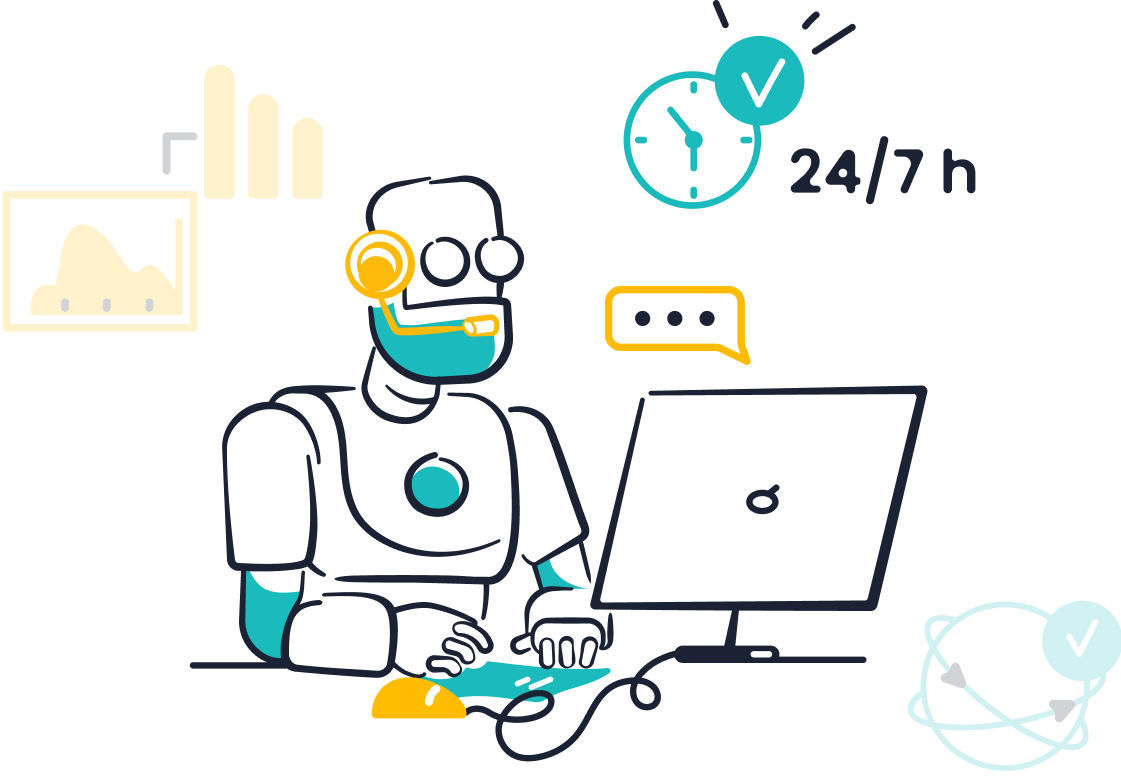
Recognizing the Role of Human Agents
When to escalate complex queries to human agents
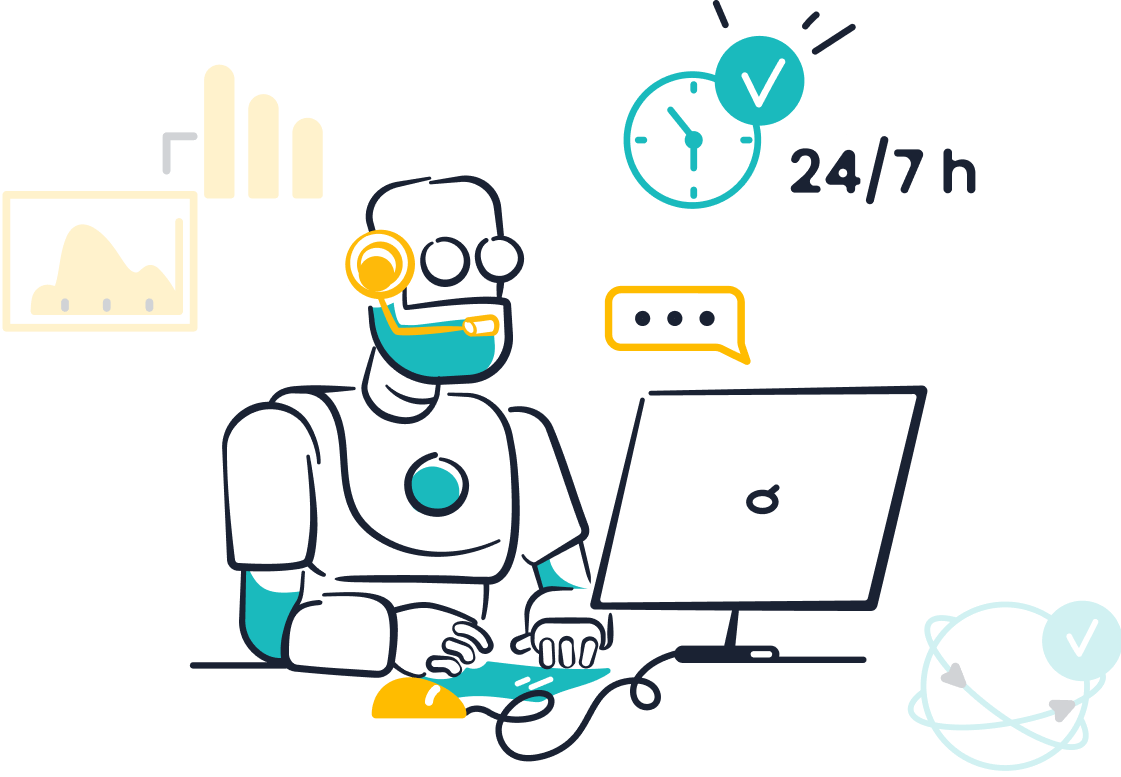
Chatbots excel at managing routine tasks, but some situations demand a human touch. For example, customers often prefer human agents for complaints requiring empathy or issues involving cross-checking data. Research shows that 75% of consumers want human support when automated tools reach their limits. Chatbots should identify these moments and escalate queries seamlessly. This approach ensures customers feel valued and helps maintain customer retention. Sobot's chatbot integrates escalation features, allowing customers to transition to human agents effortlessly when needed. This balance between automation and human interaction strengthens customer trust and satisfaction.
Training agents to complement chatbot interactions
Human agents play a vital role in enhancing chatbot performance. Proper training ensures they can handle escalated queries effectively. Agents should understand how chatbots work and use the data provided by them to resolve issues faster. For instance, when a chatbot transfers a query, the agent should have access to the conversation history. This preparation reduces response time and improves customer retention. Sobot supports businesses by integrating chatbots with omnichannel platforms, ensuring agents receive all necessary information to deliver exceptional service.
Ensuring Seamless Human-Chatbot Collaboration
Smooth handoffs between chatbots and human agents
A smooth handoff between chatbots and human agents is crucial for a positive customer experience. Chatbots should transfer conversations without losing context, ensuring customers do not need to repeat themselves. Studies reveal that 64% of consumers feel the human element is often overlooked in online experiences. Sobot's chatbot addresses this challenge by providing agents with detailed conversation histories during handoffs. This feature enhances efficiency and ensures customers receive consistent support, even when switching between automation and human interaction.
Examples of successful human-machine cooperation, such as OPPO's use of Sobot
OPPO's collaboration with Sobot demonstrates the power of human-machine cooperation. Sobot's chatbot handled repetitive queries, allowing human agents to focus on complex issues. This approach improved OPPO's service efficiency and customer retention. The chatbot achieved an 83% resolution rate, while human agents addressed nuanced conversations like modified reservations and feedback. This seamless integration resulted in a 94% positive feedback rate and a 57% increase in repurchase rates. OPPO's success highlights how businesses can enhance customer experiences by combining automation with human expertise.
Measuring the Effectiveness of Chatbot Automation Services
Evaluating Key Performance Indicators (KPIs)
Metrics like CSAT, NPS, and first response time
Tracking key performance indicators (KPIs) is essential for assessing chatbot performance. Metrics such as Customer Satisfaction (CSAT), Net Promoter Score (NPS), and first response time provide valuable insights into how well your chatbot meets customer expectations. For instance, a CSAT score between 65% and 70% indicates good performance, while an NPS score above 50 reflects strong customer loyalty. First response time measures how quickly your chatbot addresses customer queries, directly impacting satisfaction.
Additional KPIs include resolution rate, deflection rate, and goal completion rate. These metrics help you understand how effectively your chatbot resolves issues, reduces human intervention, and achieves desired outcomes. Monitoring these indicators ensures your chatbot delivers consistent and efficient service, enhancing customer satisfaction and operational efficiency.
How Sobot's Chatbot helps businesses track and improve these metrics

Sobot's AI-powered chatbot simplifies KPI tracking through advanced analytics. It monitors metrics like resolution rate, response time, and satisfaction scores, offering actionable insights. For example, businesses using Sobot's chatbot report up to a 70% productivity boost and a 20% increase in conversions. Its intuitive dashboard provides real-time data, enabling you to identify areas for improvement. By leveraging these insights, you can refine chatbot performance and ensure it aligns with customer needs.
Gathering and Analyzing Customer Feedback
Using surveys and sentiment analysis to refine chatbot responses
Customer feedback plays a crucial role in optimizing chatbot performance. Surveys and sentiment analysis help identify common themes and emotions expressed by customers. For example, analyzing chatbot transcripts can reveal frustrations with self-service channels, guiding improvements. Sentiment analysis also uncovers customer emotions in social media posts, providing insights into their satisfaction levels.
Sobot's chatbot integrates feedback mechanisms, allowing you to collect and analyze customer input seamlessly. This data helps refine chatbot responses, ensuring they address customer concerns effectively. By continuously monitoring feedback, you can enhance the chatbot's ability to deliver personalized and accurate interactions.
Incorporating feedback into chatbot optimization strategies
Incorporating feedback into your optimization strategies ensures your chatbot evolves with customer expectations. For instance, transcript analysis highlights areas where the chatbot struggles, enabling targeted improvements. Monitoring product reviews and customer interactions also informs updates to the chatbot's knowledge base.
Sobot's chatbot uses AI to adapt its responses based on customer feedback, ensuring continuous improvement. This iterative approach not only enhances chatbot performance but also boosts customer satisfaction. Businesses that prioritize feedback-driven optimization see significant gains in efficiency and customer loyalty.
Chatbot automation services have become essential for enhancing customer retention and satisfaction. They streamline operations, reduce costs, and provide 24/7 availability. Studies show that 64% of customers value this constant accessibility, while 74% prefer chatbots for simple questions. Businesses using chatbots report a 57% ROI, highlighting their efficiency in modern customer service.
Key Takeaways:
- Personalization improves customer retention by tailoring interactions.
- Data-driven optimization ensures chatbots adapt to customer needs.
- Human collaboration complements automation, creating seamless experiences.
| Statistic | Value |
|---|---|
| 62% of respondents prefer chatbots over waiting for an agent | 62% |
| 80% of consumers are willing to use a bot if they can switch to an agent | 80% |
| 69% of consumers would use chatbots for instant responses | 69% |
| 74% of customers prefer chatbots for simple questions | 74% |
| 57% of businesses report significant ROI from chatbot usage | 57% |
Sobot's customer service chatbot offers unmatched efficiency, cutting costs by up to 50% and boosting retention. Leverage Sobot's chatbot today to transform your customer experience and drive business growth.
FAQ
What are chatbot automation services?
Chatbot automation services use AI to handle customer interactions. They automate tasks like answering FAQs, processing orders, and providing support. These tools improve efficiency and reduce costs. For example, Sobot's chatbot operates 24/7, saving businesses up to 50% on agent costs while enhancing customer experience.
How do chatbots improve customer experience?
Chatbots provide instant responses, reducing wait times and improving satisfaction. They handle repetitive queries, allowing human agents to focus on complex issues. Sobot's chatbot achieves an 83% resolution rate, as seen in OPPO's case study, ensuring customers receive accurate and timely support.
Can chatbots integrate with other tools?
Yes, chatbots integrate with tools like FAQs, knowledge bases, and live chat platforms. Sobot's chatbot offers omnichannel support, connecting with WhatsApp, SMS, and more. This integration ensures seamless transitions between automation and human agents, enhancing customer experience automation.
Are chatbots customizable for different industries?
Absolutely! Chatbots adapt to various industries like retail, finance, and gaming. Sobot's chatbot is customizable, offering tailored solutions for unique business needs. For instance, it boosts conversions by 20% through proactive messaging and real-time assistance, making it ideal for sales and marketing.
How do I measure chatbot performance?
Track metrics like response time, resolution rate, and customer satisfaction. Sobot's chatbot provides real-time analytics, helping you identify areas for improvement. Businesses using Sobot report a 70% productivity boost, showcasing the effectiveness of chatbot automation services.
See Also
Tips for Selecting the Ideal Chatbot Software Solution
Simple Steps to Integrate Chatbot Examples on Your Website
Key Advantages of Using Chatbots on Your Website